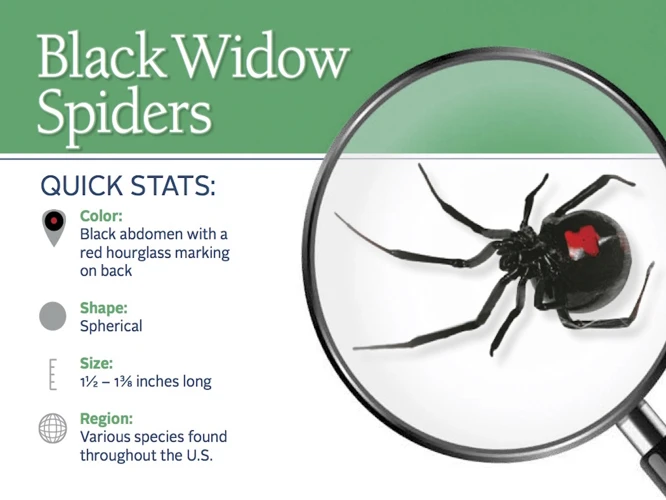Introduction
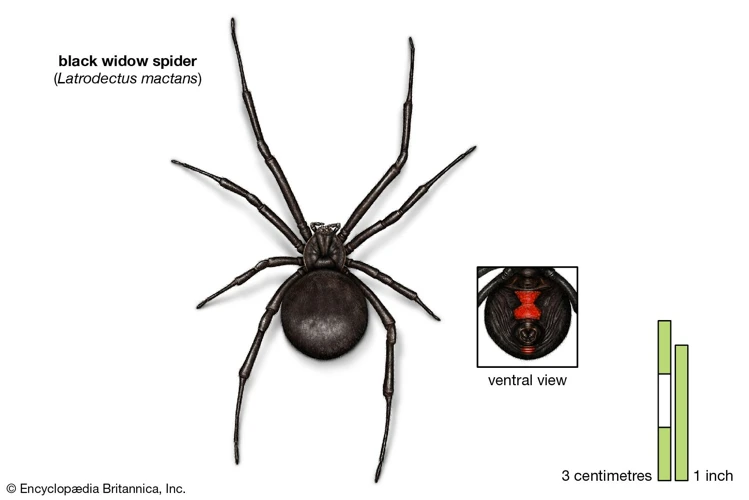
As homeowners, it’s not uncommon to come across various types of pests in and around our homes. While most pests are relatively harmless, encountering a black widow spider can be a cause for concern. These venomous spiders are known for their signature red hourglass markings on their bellies and can deliver a painful bite. Handling and disposing of black widow spiders requires caution and proper techniques to avoid harm. In this article, we’ll provide step-by-step guidance on how to safely handle and dispose of black widow spiders.
What Are Black Widow Spiders?
Black widow spiders are venomous spiders found throughout the world, including North America. They are commonly known for their distinctive shiny black body with a red hourglass-shaped marking on their abdomen. The females, unlike the males, are larger in size and more dangerous to humans as they are equipped with more potent venom. These spiders build tangled webs in dark and secluded areas, making it easy for them to remain undetected in houses and yards.
It is essential to take good care when handling black widow spiders. Their venom is neurotoxic and can cause life-threatening symptoms if it enters the bloodstream. Some of the symptoms may include muscle pain, nausea, sweating, and spasms. In extreme cases, it may cause paralysis and respiratory failure, particularly in young children, the elderly, and those with compromised immune systems.
It is essential to learn to identify black widow spiders, their distinctive features and habitat to protect ourselves from any potential harm. Black widows have black, shiny bodies with round abdomens and two reddish triangles on the bottom, forming an hourglass shape. It is crucial to keep your house clean and clutter-free. Check for spider webs along with the walls, crevices, and corners of the ceilings. These spiders frequently prefer dark areas like cellars, closets, garages, attics, woodpiles, and under outdoor furniture.
There are many ways you can prevent the infestation of black widow spiders. You can take safety precautions to avoid being bitten. Make sure to seal the cracks and crevices in doors, windows, foundation, and walls. Wear gloves and long-sleeved clothing while doing any outdoor work. Use a flashlight while cleaning and avoid touching the areas where spiders may reside.
If you are unsure about handling black widow spiders, you can also contact a pest control professional who has been trained in the safe removal of black widow spiders. They can help you identify any black widow spiders in your home or yard and provide necessary measures for their removal. There are many homemade traps and natural methods to help eliminate them safely. However, exercise caution when using chemicals or traps around children and pets. Natural ways to remove black widow spiders can be a safer option for your home.
Why You Should Be Careful When Handling Black Widow Spiders
Black widow spiders are one of the most venomous spiders in the United States. Handling these spiders should be done with great caution and care, and only by those who are properly trained and equipped to do so. The venom of the black widow spider is a neurotoxin that can cause serious health complications, such as muscle aches, spasms and contractions, abdominal pain, and in rare cases, death.
Table: Reasons to be careful when handling black widow spiders
| Reasons to be careful when handling black widow spiders |
| — |
| Black widow spiders are one of the most venomous spiders in the United States |
| Their venom is a neurotoxin that can cause serious health complications |
| Health complications may include muscle aches, spasms and contractions, and abdominal pain |
| In rare cases, venomous bites from black widow spiders can be fatal |
It is important to take all necessary safety precautions when handling black widow spiders to avoid being bitten. Even if you feel confident in your ability to handle these spiders, it is always best to err on the side of caution and seek professional assistance when possible. In the next section, we will discuss how to identify black widow spiders and where to find them. For more information on how to trap black widow spiders, check out our article on trapping black widows.
Identifying Black Widow Spiders
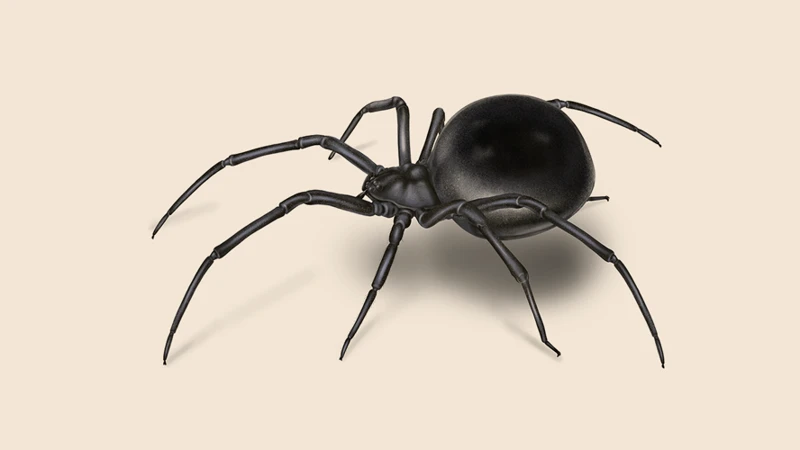
If you live in an area where black widow spiders are prevalent, it’s important to know how to identify them. Being able to distinguish this venomous species from other harmless spiders can help you take the necessary safety precautions. In the following sections, we’ll take a closer look at the physical characteristics and typical habitats of black widows. This will help you to not only identify them, but also avoid them if possible.
Physical Characteristics of Black Widow Spiders
Black Widow spiders are one of the most venomous spiders in the United States. Recognizing their physical characteristics is key to identifying them and keeping yourself safe. Black Widow spiders are small, typically about 1.5 inches long and shiny black in color. They have a distinctive red hourglass shape on their abdomen. Both male and female black widow spiders have a shiny, black body, but only the females have the red hourglass on their abdomen. It’s important to note that not all black widow spiders have a red hourglass, as some may have different markings. So, it’s best to be cautious around any black spiders, especially if they are in areas where black widows are known to live.
| Physical Characteristics of Black Widow Spiders | |
|---|---|
| Body Size | About 1.5 inches long |
| Body Color | Shiny black |
| Distinctive Markings | Red hourglass shape on abdomen (females) |
| Web | Messy, tangle of fibers |
Black Widow spiders prefer to live in dark, dry, and warm environments. These environments can include garages, sheds, woodpiles, and basements, as well as outdoor areas like gardens and bushes. If you suspect that black widows are present in your home or yard, it’s important to take action to remove them to reduce the risk of a spider bite. Check out our article on the best trappers for black widows for more information on how to keep these spiders away from your living spaces.
Where to Find Black Widow Spiders
Black widow spiders are commonly found in warm climates, particularly in the southern and western United States. They are often found in dark, dry, sheltered areas, such as garages, barns, sheds, basements, and crawl spaces. In particular, black widow spiders may be found in cluttered areas where debris and piles of wood or other materials are present.
Although black widow spider bites are rare, it’s important to take precautions if you suspect that these venomous spiders are present in your home or yard. If you see cobwebs or other signs of spider activity, use caution when inspecting the area.
Here are some common areas where black widow spiders may be found:
| Location | Description |
|---|---|
| Outdoors | Black widow spiders often live in woodpiles, under rocks or other debris, in hollow tree stumps, and in other sheltered, dry areas. |
| Indoors | Black widows can be found anywhere there is a dark, dry habitat. They often take up residence in cluttered areas such as basements, garages, closets, attics, and crawl spaces. |
| Gardens and Landscapes | Black widows may be found in garden beds, under plants, and in other areas where vegetation is present. Be cautious when working in the garden or landscaping, particularly when pruning or moving plants. |
If you suspect that black widow spiders are present in your home or yard, it’s important to take steps to remove them safely and effectively. There are a variety of methods for trapping and removing black widow spiders, including DIY traps, glue boards, and chemical sprays. However, it’s important to note that some methods may be more effective than others, and some may be more appropriate for indoor versus outdoor use.
For more information on trapping and removing black widow spiders safely and effectively, consider checking out our articles on DIY black widow traps, the pros and cons of chemicals traps for black widows, and professional spider removal services.
Safety Precautions
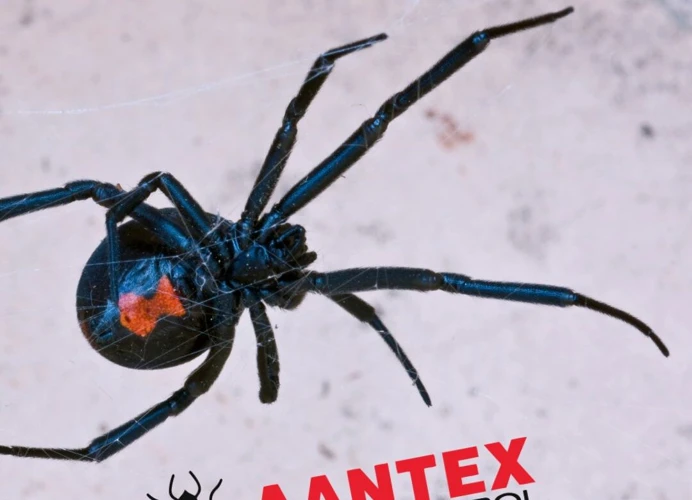
Ensuring Your Safety: Precautionary Measures for Handling Black Widow Spiders
Black widow spiders are notoriously dangerous and shouldn’t be handled without prior caution, especially since their bites can be fatal in some cases. Before proceeding to handle them, it’s important to take the necessary safety precautions to avoid getting bitten. In this section of the article, we’ll cover some of the essential safety measures that you need to take before handling black widow spiders. By following these steps, you can handle these spiders safely and without putting yourself or others at risk. For more information on chemical traps, check out our article on the pros and cons of using chemicals to trap black widows.
Wear Protective Clothing and Gloves
When dealing with potentially dangerous creatures like black widow spiders, taking proper safety precautions is key. One of the most important safety tips to follow is wearing protective clothing and gloves. This will help to reduce the risk of being bitten, as well as provide a barrier between your skin and any potential irritants or toxins that the spider may carry.
Here are some tips to follow when selecting protective clothing and gloves:
- Choose thick, durable material for clothing that covers as much of your skin as possible.
- Wear long sleeves, pants, and socks to reduce the amount of exposed skin.
- Consider wearing boots instead of open-toed shoes or sandals.
- Select gloves that are made with thick, puncture-resistant material, such as leather or rubber.
- Avoid wearing jewelry or clothing with loose threads that could get caught on the spider or container.
It’s important to remember that even with protective clothing and gloves, handling black widow spiders can still be dangerous. Always take the necessary steps to trap and transport the spider safely, and avoid putting yourself or others at risk.
If you do get bitten by a black widow spider, seek medical attention immediately. You can find more information about black widow spider bites on our page “Black Widow Spider Bites on Humans”.
Aside from protective clothing and gloves, there are other ways to trap and remove black widow spiders. You can learn more about DIY traps, glue boards, and professional removal services on our pages “DIY Black Widow Traps”, “Glue Boards for Black Widows”, and “Are Professional Spider Removal Services Worth It?”.
If you prefer to trap the spider yourself, we have a guide on “Trapping Black Widow Spiders (Indoor and Outdoor)”, as well as information on using essential oils to repel black widow spiders on our page “Using Essential Oils to Repel Black Widow Spiders”.
Use a Container or Jar to Trap the Spider
When it comes to handling black widow spiders, one of the most important safety precautions is to use a container or jar to trap the spider. This will keep you from accidentally touching the spider or crushing it in an attempt to catch it.
Here are the steps to follow when using a container or jar to trap a black widow spider:
- Choose a container or jar that is large enough to easily trap the spider, but small enough to prevent it from being able to escape
- Make sure the container has a lid that can be secured tightly
- Approach the spider carefully and slowly with the container or jar
- Quickly place the container or jar over the spider, being careful not to crush it in the process
- Slide a piece of paper or cardboard under the container or jar to trap the spider inside
- Hold the lid securely in place and carefully remove the container or jar from the area
Remember to be slow and cautious when attempting to trap a black widow spider, as sudden movements can startle or agitate the spider. Additionally, it’s important to label the container or jar clearly so that others are aware of its contents and can avoid accidentally opening it.
By following these steps and using a container or jar to trap the spider, you can safely handle the black widow spider without putting yourself or others at risk.
Avoid Crushing the Spider or Touching it Directly
When handling black widow spiders, it’s important to avoid crushing them or touching them directly. This is not only for your own safety but for the well-being of the spider as well. Here are some tips to help you avoid crushing or touching the spider:
- Use Gloves: Always wear protective gloves when handling black widow spiders. Gloves not only help protect your skin from spider bites, but also provide an extra layer of protection for the spider.
- Use Tools: Use tools such as a jar, a container or tweezers to pick up the spider. This can help you to avoid crushing the spider’s delicate body, and prevent any unintentional harm to it.
- Be Gentle: When handling black widow spiders, it’s important to be gentle and delicate. These spiders are fragile creatures, and any rough handling can cause harm.
- Do Not Squash: Avoid the temptation to squash the spider, even if you feel threatened or want to dispose of it quickly. It is an inhumane way to handle black widow spiders and can cause unnecessary harm as well. Instead, use appropriate tools and techniques to safely capture and remove the spider.
By taking these precautions, you can safely and humanely handle black widow spiders. Remember that these spiders are an important part of our ecosystem, and it’s our responsibility to treat them with care and respect.
How to Safely Handle Black Widow Spiders
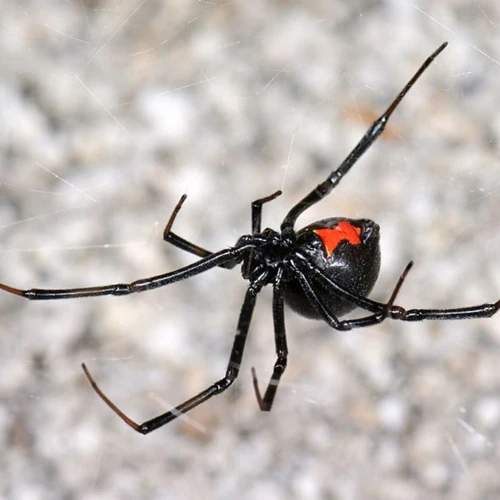
Handling black widow spiders is not for the faint of heart. However, in some cases, it may be necessary to capture and transport these dangerous spiders to a safer location. This process can be dangerous if not done properly, but with the right safety precautions and techniques, it can be relatively safe for both you and the spider. In this section, we will discuss the step-by-step process of how to safely handle black widow spiders. Keep in mind that this process should only be attempted by individuals who have experience handling spiders or under the guidance of a pest control professional.
Slowly and Gently Encourage the Spider into the Jar or Container
When it comes to handling black widow spiders, it’s important to take things slow and gentle to avoid agitating the spider and putting yourself in danger. The following steps will guide you on how to safely and gently encourage the spider into the jar or container.
| Step 1: | Approach the spider slowly and cautiously, avoiding sudden movements |
| Step 2: | Use a soft brush or a piece of paper towel to gently guide the black widow spider towards the jar or container |
| Step 3: | Be patient and give the spider time to crawl into the jar or container on its own |
| Step 4: | Once the spider is in the jar or container, gently and slowly place the lid on top |
| Step 5: | Double-check that the lid is securely in place before transporting the spider |
It’s important to remember that black widow spiders can be dangerous, and mishandling them could result in painful and potentially fatal bites. Using caution and being gentle during the process of enouraging the spider into the container is crucial for both your safety and the safety of the spider.
Seal the Lid of the Container Tight and Label It Appropriately
After you have successfully captured the Black Widow Spider in a container, it is important to seal the lid tightly and label the container appropriately to prevent accidental opening. Follow the steps below to ensure proper sealing and labeling:
| STEP 1: | Check that the container’s lid is secure and tightly shut. Make sure to twist or snap the lid into place to create a tight seal. |
| STEP 2: | Use strong tape to tape around the edges of the lid to ensure no gaps are left exposed. This will help prevent the spider from escaping or any accidental opening of the container. |
| STEP 3: | Label the container with the species of spider, date and location of capture. This information will be helpful when you are transporting the spider to a safe location or when seeking professional assistance. |
| STEP 4: | Also, it is important to keep the labeled container in a safe, cool, and dry place away from anyone or anything that may accidentally come in contact with the spider. A locked cabinet or shelf is highly recommended. |
By following these simple steps, you can ensure the safety of yourself, your family, and your pets while handling the potentially dangerous Black Widow Spider. Remember to take extra caution and be mindful of your surroundings throughout the handling and transportation process.
Transport the Spider to a Safe Location Away from Humans and Pets
Once you have safely captured the black widow spider, it is essential to transport it to a safe location away from humans and pets. This step requires utmost caution since the spider can be dangerous, and any mishandling could lead to severe physical harm.
Step 1: Choose a Safe Location
Find a suitable location that is far from any residential or commercial area. Black widow spiders prefer dark and damp locations like tree bark, piles of leaves, rocks, and woodpiles. You could transport the spider to such a location, which can provide a natural habitat for it.
Step 2: Proper Containment
To carry the spider, place the container or jar with the spider in a sealable plastic bag. Make sure the bag is sealed properly to prevent any accidental openings. This ensures that in case of any mishandling, the spider will not escape from the container and bite anyone.
Step 3: Handling the Containment with Caution
Handle the container or jar with caution, ensuring that it is kept upright and steady. Do not shake the container or jar containing the spider as it may cause the spider to move unexpectedly.
Step 4: Release the Spider
Once you have reached the safe location, open the container or jar in a calm and controlled manner, ensuring that the spider does not jump or fly out. Allow the spider to crawl slowly out of the container by itself. This will give you enough time to escape harm’s way and also ensures that the spider is not damaged or killed.
Step 5: Disposal of the Container or Jar
After the spider has been released safely, dispose of the container or jar appropriately. You could wash it with hot water and soap to kill any germs that may have stuck to it.
Transporting the black widow spider to a safe location requires careful handling and an understanding of the spider’s behavior. Follow the steps above to ensure that you, your family and pets are safe, while also protecting the spider’s natural habitat.
How to Dispose of Black Widow Spiders
If you’ve managed to safely capture a black widow spider, you may be wondering how to dispose of it properly. It’s important to handle this task with caution to ensure the safety of yourself and others. In this section, we will cover the best practices for safely disposing of black widow spiders to prevent any potential harm.
Release the Spider Carefully in a Safe Outdoor Location
After safely trapping and handling the black widow spider, it’s time to release it back into the wild. However, it’s crucial to release the spider in a safe outdoor location, away from human populations and pets. Here are a few steps to follow for a safe release:
- Choose an appropriate location: Find a quiet, secluded outdoor area that is not frequented by humans or pets. Look for areas with vegetation where the spider can find shelter and prey.
- Open the container: Slowly and carefully open the container or jar where the spider is held. Do not touch or shake the spider in the process.
- Let the spider crawl out: Keep a safe distance and allow the spider to crawl out of the container at its own pace. Don’t try to force the spider out or poke at it.
- Observe from a safe distance: Once the spider has crawled out, observe it from a safe distance to ensure it appears healthy and can move properly. If the spider seems lethargic or injured, it’s possible that it was harmed during the capture and handling process. Consider contacting a pest control professional for assistance.
- Dispose of the container: After the spider has safely crawled out, dispose of the container or jar used for trapping it. Clean it thoroughly to ensure there are no spider webs or remnants left behind.
Remember that black widow spiders play an important role in our ecosystem and should be treated with respect. Handling and releasing them safely can help protect both humans and spiders, allowing them to continue their important role in the environment.
If Necessary, Contact a Pest Control Professional to Handle It
If you feel uncomfortable handling a black widow spider yourself, it is always best to seek help from professional pest control. Here are some reasons why you might need to do so:
- If the spider is in a hard-to-reach location, such as inside a wall, ceiling, or under flooring.
- If there are many spiders present, indicating an infestation.
- If you have a severe allergy to spider bites.
- If you are not sure if the spider is really a black widow and want a professional to confirm.
Pest control professionals have the necessary tools and knowledge to handle black widow spiders in a safe and effective manner. They can remove the spider and also help to prevent future infestations. When contacting a pest control professional, be sure to provide as much information as possible about the location of the spider and the situation. With their help, you can ensure that your home or business is free from black widow spiders and other pests.
Conclusion
In conclusion, handling and disposing of black widow spiders may seem like a daunting task, but with proper precautions and techniques, it can be done safely. Remember to always wear protective clothing and gloves when approaching these dangerous spiders, and use a container or jar to trap and transport them. It’s important to avoid touching the spider directly or crushing it, as this can increase the risk of a bite.
Identification of black widow spiders is crucial in taking the necessary safety measures. These spiders have distinct physical characteristics, such as shiny black bodies and red hourglass markings on their abdomen. They are commonly found in dark, dry places such as basements, garages, and woodpiles.
When handling black widow spiders, it’s important to be gentle and avoid startling or agitating them. Slowly and carefully place them into the container or jar, making sure to seal it tight and label it appropriately. Transport them to a safe location away from humans and pets before releasing them.
If you’re uncomfortable handling black widow spiders on your own, it’s always an option to contact a pest control professional. They are trained and equipped to handle these dangerous spiders safely and effectively.
Overall, the key to safely handling and disposing of black widow spiders is preparation and caution. By taking the proper safety precautions and following these step-by-step guidelines, you can successfully remove these spiders from your environment without risking harm to yourself or others.
Frequently Asked Questions
What should I do if I find a black widow spider in my home?
You should wear protective clothing and gloves, carefully trap the spider in a container, seal the lid, and transport it to a safe location away from humans and pets.
How venomous are black widow spiders?
Black widow spiders are highly venomous and their bites can cause severe pain and muscle spasms, and in some cases, can be life-threatening.
What should I do if I am bitten by a black widow spider?
If you are bitten by a black widow spider, seek medical attention immediately. In the meantime, apply cold compresses to the bite area and take over-the-counter pain medication.
How can I prevent black widow spiders from entering my home?
You can prevent black widow spiders from entering your home by keeping your house clean and clutter-free, sealing any cracks or gaps in windows and doors, and removing any spider webs or eggs.
Can black widow spiders be found in all parts of the world?
No, black widow spiders can only be found in certain parts of the world, including North and South America, Australia, and Africa.
Are black widow spiders aggressive towards humans?
No, black widow spiders are not aggressive towards humans and will only bite if they feel threatened or provoked.
How can I tell if a spider is a black widow spider?
You can identify a black widow spider by its shiny black body, red hourglass-shaped marking on its abdomen, and long legs that are usually positioned in a way that makes its body appear to be upside down.
What should I do if I accidentally crush a black widow spider?
If you accidentally crush a black widow spider, clean the area with soap and water and monitor it for any signs of infection. Seek medical attention if necessary.
Can I keep a black widow spider as a pet?
It is not recommended to keep black widow spiders as pets due to their highly venomous bites and potential danger to humans and pets.
What is the lifespan of a black widow spider?
The lifespan of a black widow spider is typically around 1-3 years.

